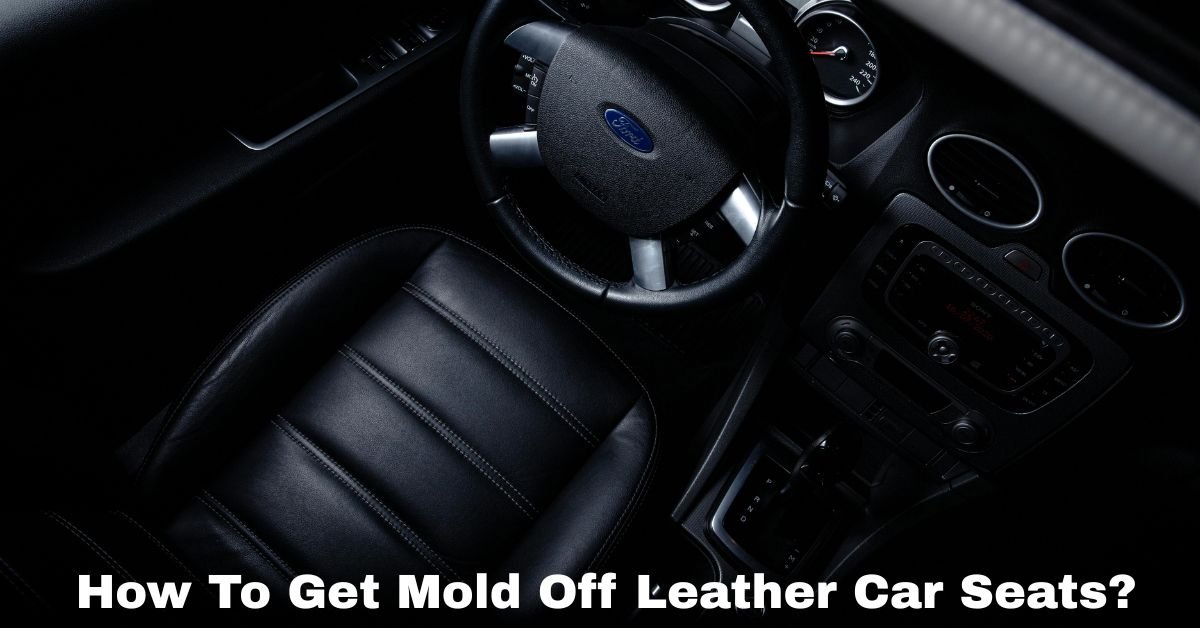Finding mold on your leather car seats can be both frustrating and concerning. If left unchecked, mold can deteriorate the quality of the leather in addition to producing disagreeable smells and stains. Whether you’re dealing with a mild infestation or a more severe outbreak, it’s important to address the problem quickly and properly to prevent permanent damage. In this post, we’ll walk you through everything you need to know about getting mold off leather car seats — safely and effectively.
How to Get Mold Off Leather Car Seats: A Step-by-Step Guide
Why Mold Grows on Leather Car Seats
Leather is a porous material, which means it can absorb moisture from the air, especially in humid or damp conditions. When this moisture is trapped and the car interior lacks ventilation — for example, during rainy seasons or if the car is stored in a garage — it creates a perfect environment for mold to grow.
Common causes of mold in cars include:
- Leaving windows open during rain
- Spilled drinks or damp clothing left on seats
- High humidity and poor air circulation
- Leaks in windows or sunroof
What You’ll Need
Before you begin, gather the following supplies:
- Soft-bristled brush or microfiber cloth
- Vacuum with soft brush attachment
- White vinegar or isopropyl alcohol (70% or higher)
- Spray bottle
- Distilled water
- Mild leather cleaner or saddle soap
- Leather conditioner
- Protective gloves and mask (recommended for safety)
Step-by-Step Cleaning Process
Step 1: Air Out and Vacuum
Start by opening all the car doors and letting the vehicle air out for at least 20–30 minutes. This makes the automobile safer to clean by ventilating it and lowering the amount of mold spores in the air. Use a vacuum with a brush attachment to gently remove loose mold from the seats. Be sure to vacuum other leather surfaces and crevices where mold might hide.
Must Read: How To Get Blood Stain Out Of Car Seat?

Step 2: Mix a Cleaning Solution
There are two effective and safe options for removing mold from leather:
Option 1: White Vinegar Solution
In a spray bottle, combine equal parts distilled water and white vinegar.
Option 2: Isopropyl Alcohol Solution
Combine one part distilled water with one part isopropyl alcohol.
Both vinegar and alcohol have antifungal properties that help kill mold spores.
Step 3: Apply the Solution
Never spray the solution directly onto the leather; instead, lightly mist a clean microfiber cloth with it. Gently wipe the moldy areas, using a circular motion. Be careful not to soak the leather, as too much liquid can cause damage.
Continue doing this until all of the mold is gone. For stubborn mold, you can apply a bit more solution to the cloth and gently scrub with a soft brush.
Step 4: Clean the Leather
Once the mold is gone, clean the leather with a commercial leather cleaner or saddle soap. This restores the natural texture of the leather and helps get rid of any leftover residue. Follow the manufacturer’s instructions for the product you’re using.
Step 5: Dry and Condition
Use a dry microfiber cloth to remove excess moisture from the leather. Leave the doors open in a well-ventilated, shaded place to enable the vehicle seats dry thoroughly. Steer clear of direct sunlight as it might cause the leather to dry up and fracture.
Once dry, apply a leather conditioner to nourish and protect the material. Conditioning also helps prevent cracking and keeps the leather supple after cleaning.
Preventing Mold in the Future
To avoid dealing with mold again, consider these tips:
- Keep your car dry and well-ventilated
- Check for leaks in the windows or sunroof
- Avoid leaving wet clothes, towels, or umbrellas inside
- Use moisture absorbers or silica gel packs in humid seasons
- Regularly clean and condition your leather seats
Final Thoughts
Mold on leather car seats may seem like a big problem, but with the right tools and techniques, it’s very manageable. The key is to act quickly, use the right cleaning agents, and treat your leather with care. Regular maintenance and moisture control are your best defenses against future mold outbreaks. With these steps, you can restore your car’s interior to a clean, fresh, and healthy state.
